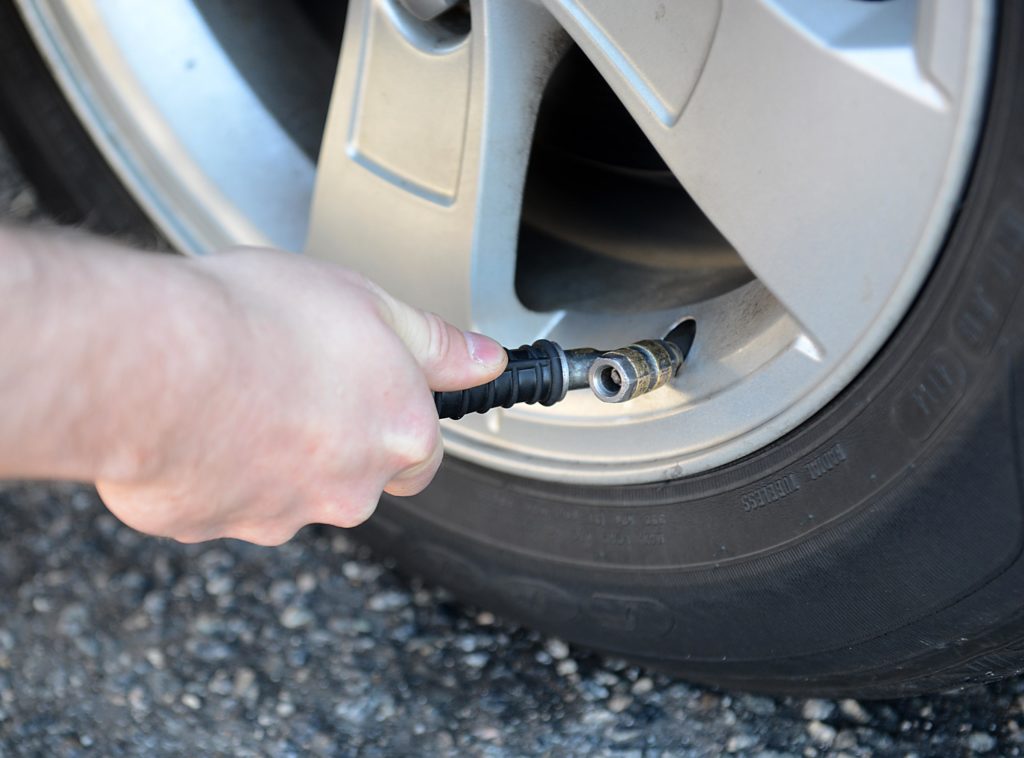Something as simple as checking your tire pressure can make a great deal of difference for the safety of your daily commute. When was the last time you checked your tire pressure? If you’re like most drivers, it wasn’t recent. Did you know that driving on under-inflated tires is not only dangerous, but can cost you in gas mileage too?
Seasons and temperature
When checking your tire pressure, it is recommended to check it before you drive when it has cold inflation pressure for a more accurate reading. Air contracts or expands depending on the temperature, so when your tires are warm or during the summer months your tires will have more air pressure. During the winter months or when your tires are cold your tires will lose air pressure. A good metric to keep in mind is that for every difference of 10 degrees Fahrenheit, your tires will lose or gain 1 PSI. If you think about the difference between summer and winter temperatures, that fluctuation is enough to lower your air pressure by 5 PSI when the cold weather sets in.
Most modern cars have a Tire Pressure Monitoring System (TPMS) indicator light. This light is helpful, but will only tell you that your tires need air when the air pressure falls below 25% of the recommended inflation for your vehicle.
How to check your tire pressure and inflate your tires
Most gas stations have an air pump which only costs a few quarters, or you can purchase a portable air pump. Most gas stations also have a tire pressure gauge. It is not recommended to use these gauges for reliability. The TIA’s Safety Council suggests having your own. You can purchase a reliable digital gauge for around $10 at any auto retailer.
Every car has a recommended cold inflation pressure, usually displayed in the owner’s manual, on the sticker inside the driver’s side doorjamb, on the glove box door, or on the fuel filler flap. The number on the sidewall of your tire is the maximum PSI which indicates the maximum PSI for which the tire will support, but not what the recommended PSI for your car.
Once you have determined your car’s PSI, unscrew the valve cap and put it in a safe place. Press your tire gauge to the valve stem, letting a little air out to get a reading. To ensure an accurate reading, press the tire gauge several times and make note. If the pressure is too low, attach the hose fitting of the air compressor to the valve stem and press down on the lever to allow the flow of air. Check the pressure again and repeat if necessary until all 4 tires are at the recommended PSI. Screw the valve caps back on and you are ready to go!
Call us anytime you need roadside assistance in San Diego, visit our website or dial our number directly 858-278-1247. The operator will ask you for your current location and the type of service that you need, such as “flatbed towing service.” Minutes later, a flatbed tow company will call you directly to confirm that help is on the way and let you know when to expect assistance to arrive. In most areas of San Diego, we are able to get a tow to you within 15 to 30 minutes of your call.

